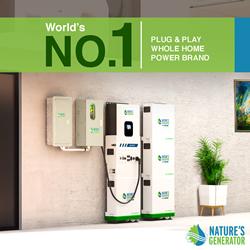Eastron's DC Energy Meters Powering the Future of EV Charging Infrastructure
The rapid growth of electric vehicles (EVs) has intensified the need for robust charging infrastructure, with DC energy meters emerging as a cornerstone technology. These devices are critical for enabling high-speed charging, ensuring operational safety, and optimizing energy management. Below, we delve into the technical applications and advantages of DC energy meters in fast-charging ecosystems.
1. What Are DC Energy Meters and Their Advantages
These DC energy meters are highly accurate, with measurements as precise as 0.5%, ensuring trustworthy data for billing or energy-saving plans. Built to withstand high currents and a wide range of voltages, they're tough enough for heavy-duty jobs in factories or EV charging hubs. By keeping monitor on real-time power use, they also help cut energy waste—like spotting inefficiencies in fast-charging systems—making them a practical tool for both saving costs and supporting greener energy solutions.
2. DC Energy Meters in EV Charging Piles: Driving Sustainable Mobility
The world's move toward electric vehicles (EVs) is accelerating, and with it comes a stronger need for fast, reliable charging options. In this shift, DC energy meters have become a key component of DC fast-charging stations, which are essential for cutting down charging times and making EVs more practical for everyday use. These DC energy meters work by constantly tracking the flow of electricity—measuring voltage and current in real time—to ensure energy moves safely and efficiently from the power grid to car batteries. They also help manage advanced functions like balancing power loads across multiple chargers and spotting technical issues before they cause problems.
By speeding up charging, DC energy meters are helping expand EV infrastructure. They make high-power public charging stations more practical, support large fleets of electric vehicles (like delivery trucks or taxis), and even integrate with renewable energy systems, such as solar-powered charging hubs. This technology isn't just about convenience; it's a critical piece of the puzzle for building a global EV network that's fast, scalable, and aligned with cleaner energy goals.
3. Spotlight on Eastron's Innovative Solutions: DCM6 and DCM230-2 Series
As a leader in energy measurement technology, Eastron introduces two cutting-edge DC energy meters tailored for modern EV charging needs:
DCM6 Series: engineered for high-power EV charging stations, supporting currents up to 650A and voltages up to 1000V while complying with MID/Eichrecht certification for billing accuracy. Its features include data recording for tracking energy usage, charging duration monitoring to optimize station efficiency, and line loss measurement to identify system inefficiencies, all secured by signed and encrypted data to prevent tampering.
DCM230-2 Series: combines rugged reliability with precision, certified by MID for billing compliance and designed for high-power applications like EV fast chargers. It operates at voltages up to 1000V with a 150A-600A range via DC shunt connection, delivering 0.5% accuracy even in demanding environments. The built-in RS485 Modbus communication enables real-time data monitoring and system integration, making it ideal for measuring and monitoring in DC system or high-speed charging stations.
By combining precision, safety, and adaptability, DC energy meters are not just components but enablers of a scalable, user-centric charging ecosystem. As EV adoption accelerates, DC energy meters will remain pivotal in bridging the gap between high-power charging demands and sustainable energy practices.
Eastron will continue to lead this evolution, delivering metering innovations that redefine efficiency and reliability in the electrified mobility era.
Featured Product

Nature's Generator MyGrid 10K
A 10,000W plug & play whole-home generator with a 10kWh LiFePO4 battery for reliable backup power. Features easy setup, flexible 120V/208-240V input, and solar/wind charging. Expandable with extra batteries or solar panels, and can pair two units for 20,000W for even larger energy needs. Powers your home during power outages, reduces electricity costs, and supports sustainable energy.
